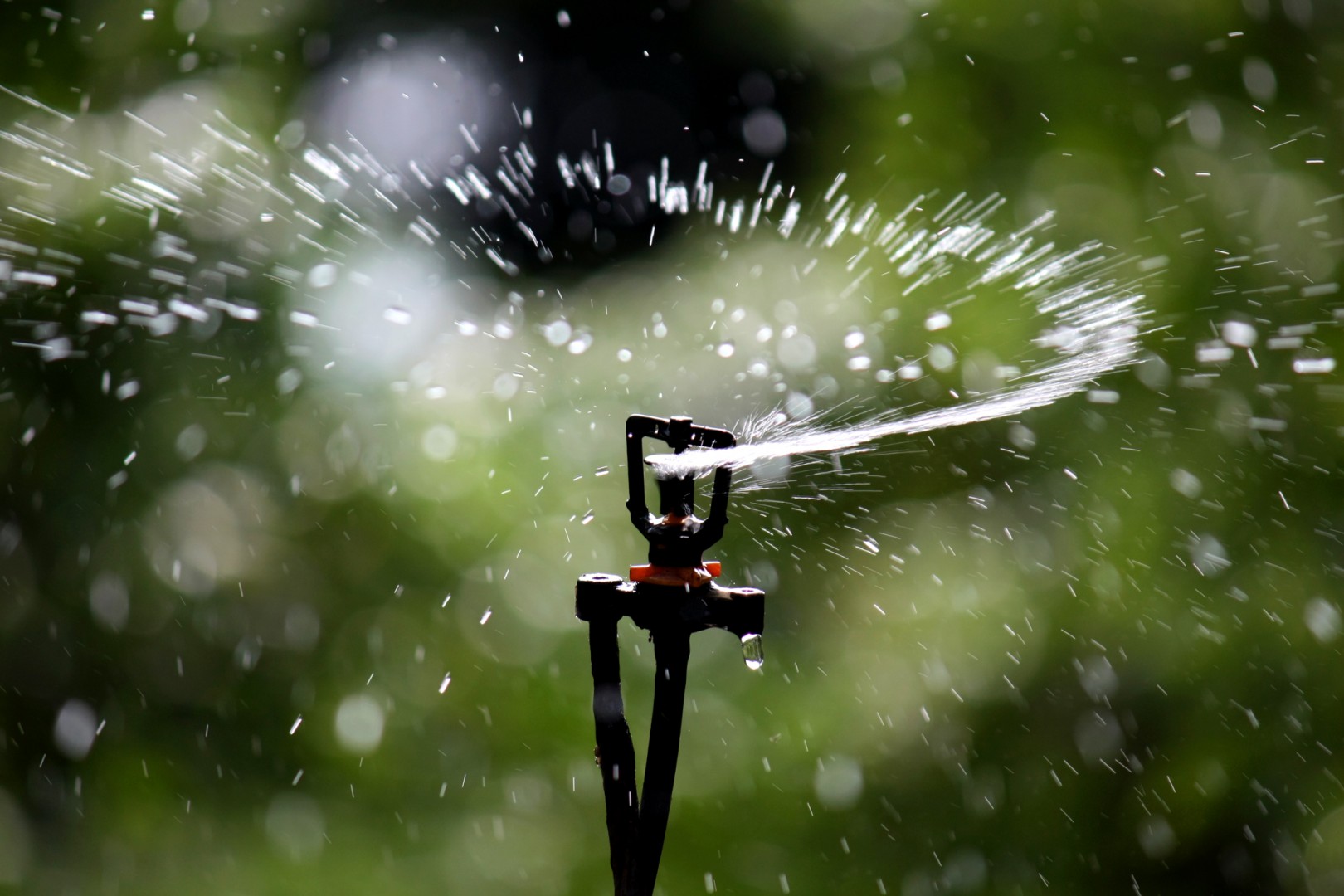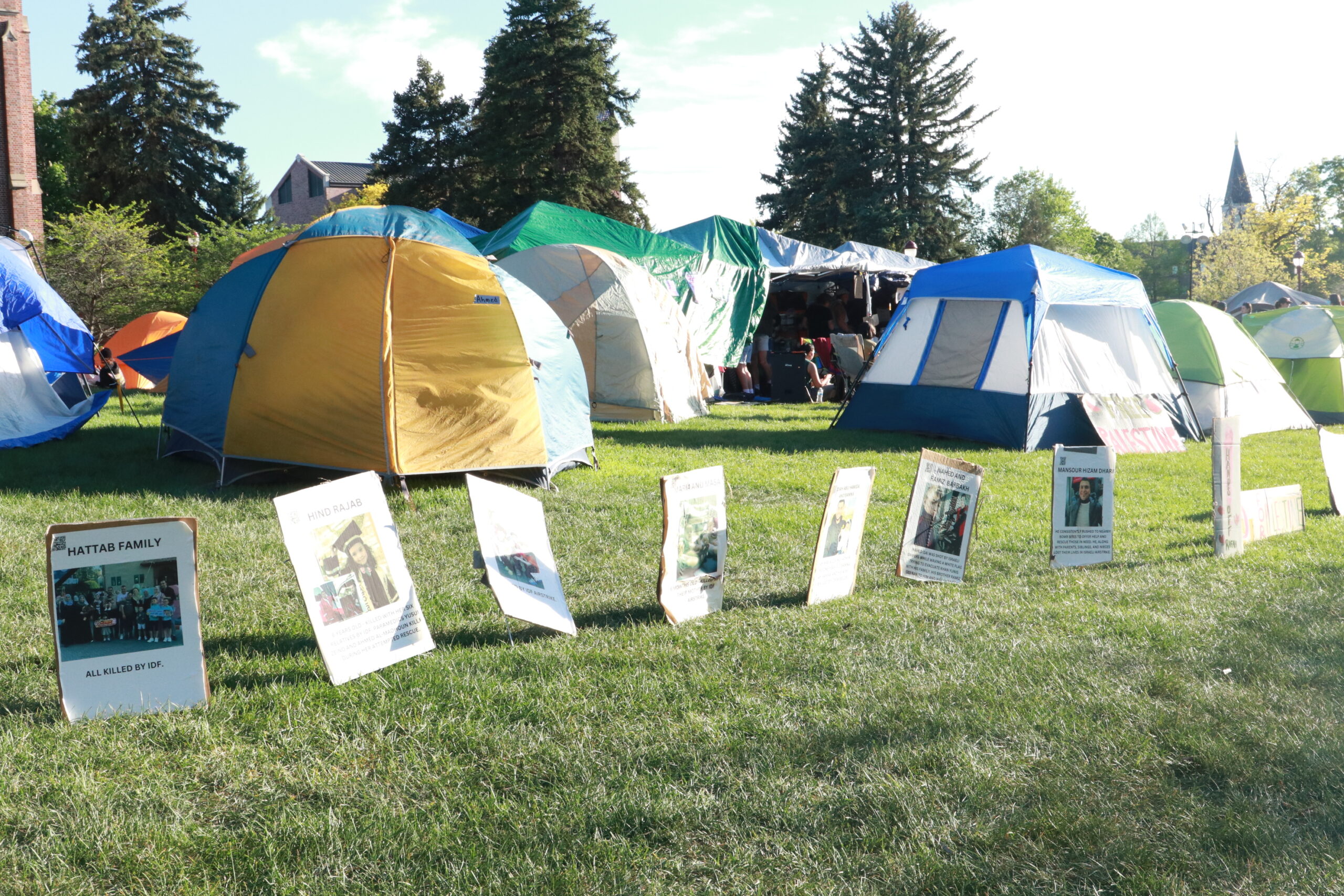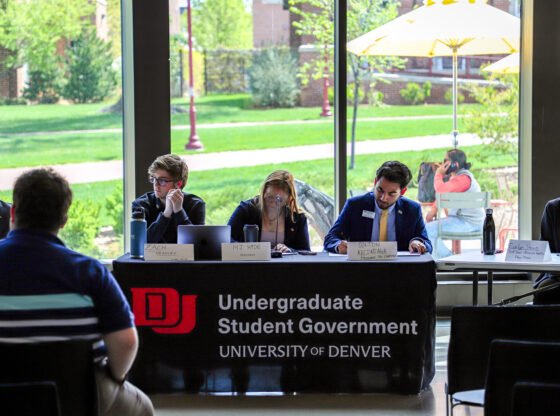DU has begun to cut water usage throughout campus and will continue to restrict use next year after being asked by Denver Water to reduce water use by 20 percent throughout campus, an initiative which began April 1.
According to Campus Operations Director David Snyder, the university has agreed to reduce water use by 35 percent on outdoor facilities and 10 percent within the buildings. The restrictions will last until March of 2014.
The cutback comes by request of Denver Water, Denver’s water utility which serves most of the Denver and Colorado population. According to their website, Denver Water officially adopted Stage 2 drought operating rules on March 27, which restrict homeowners to watering their lawns twice a week.
The university is working directly with a representative from Denver Water to determine how to best meet the requirements of the restriction, according to Energy Manager Tom McGee and Snyder.
“Denver has asked us to wear brown spots as a badge of honor,” said Snyder.
As part of the plan to keep to the newly-set restrictions, the university joined the rest of the city in reducing watering many on-campus grass areas to two days a week from five.
In 2011, the university used 130 million gallons of water, and last year 137 million according to Snyder. So far this year, they have used 90 million. Reduction of 45 percent will reduce that amount by approximately 61.7 million gallons.
“We’re looking at reducing our levels of irrigation,” said McGee. “It could be a case where you see a few more brown spots over the summer.”
Grass on campus is now being watered twice a week from 10 p.m. to 6 a.m., adhering to timing requirements also set down by Denver Water. However, areas on campus have been given exception to the restriction.
These areas include CIBER Field, the greens near the Daniels College of Business, as well as Carnegie Green and the Admissions buildings. According to Snyder, these areas will be watered regularly in order to accommodate summer events which are held on campus.
“There are a lot of functions they have over there, graduation and stuff,” Snyder said. “So we have to keep those green.”
Water use casualties also include several university fountains. This year, the upper portion of the pond which runs approximate to the Evans Memorial Chapel will be empty, adhering to Denver Water restrictions which bar filling open water features with “airborne” water, or water which falls from one level to another.
However, the university has received a permit to fill the lower pond according to Snyder, which will be used for aesthetic pleasure for weddings and other events held on campus annually.
“With the investments in plants that we have, we’re filling the lower ponds and putting as many plants as we can in there.” said Snyder.
The newly-built fountain near the campus Holocaust memorial will also be empty this year, starting after it’s grand opening. Denver Water granted the university a variance to run the fountain only for the day of the grand opening.
The Boettcher ponds will also remain empty this year.
According to Snyder, Facilities conserved 33 percent of its regular output in April, the first month of the restrictions. He also noted that this percentage, calculated by Denver Water, includes use of the irrigation system, which has not been turned on yet. Snyder believes the actual numbers, now being determined by Denver Water, may be even higher.
Snyder said most water use, however, comes from on-campus buildings. Last year, only 34 million gallons of the total 127 used on campus were used through irrigation. The university has also initiated a number of projects within the buildings to reduce water usage.
According to McGee and Snyder, several initiatives are underway to reduce water usage within campus buildings, many of which were in progress before the water restriction was declared. One experimental project is the “Silver Bullet Program,” which is in place inside Nelson Residence Hall, Nagel Residence Hall and the Seeley G. Mudd building.
The Silver Bullet Program reduces water use through use of cooling towers. An assessment by Denver Water found that if implemented campus-wide, there is a potential for 800,000 gallons of water saved through this program.
“What they are doing is they are identifying what the rebate would be. So we will look at the numbers they come back with and we will do an assessment based on the rebate of what it would cost and what kind of savings we would be able to generate,” said McGee.
In addition to this pilot program, McGee said there are a number of technologies being utilized to reduce use, including LEED development within buildings and wide scale use of low-flow showers and toilets.
According to Vice Chair of Sustainability Council Christy Cerrone, HRE is also jumping in on water saving practices. The department has worked with Facilities on the implementation of low-flow showerheads in all the residential halls starting in the summer of 2011, as well as directing educational programming for residents regarding water use.
In one program, five-minute timers were put into every shower in the residential halls so students can time the length of their showers.
“That was our education initiative, to make people conscious of how long they are in the shower,” said Cerrone.
Despite the efforts, McGee said it will be difficult for the university to find ways to reduce the amount of water use being asked by Denver Water.
“It is a challenge in particular for the university because I think the university has done a lot in terms of water conservation in the last five or ten years, so there’s not as many opportunities for additional conservation because we have already done so much,” said McGee.
Sustainability Coordinator Chad King said DU’s sustainability team has also been involved in the reduction through separate projects including Xeriscaping, which focuses on water conservative landscaping, and with a Daniels Net Impact Water Team. They are looking to further contribute to the effort next year.
“Next year we will be working on campus education efforts about the drought, and will be working more directly with programs in the residence halls. We also hope to be expanding on the efforts of the Xeriscaping team,” King said.
Other large-scale remodeling projects include replacing campus greens with more shrubbery and flowers, according to Snyder.
“If you look at Ben Cherrington, that was an effort to get away from some of the grass area, and there are a lot more plants,” said Snyder. “But there are certain areas on campus that we just can’t do that because kids like to break out and play Frisbee.”
The university is also undertaking include installation of Astroturf adjacent to CIBER Field, as well as further use of the campus well to offset some of the costs of the watering restrictions.
In 2011, the university used five million gallons from the campus well. Last year, that number increased to 10 million gallons, which is the number they hope to reach again this year according to Snyder.
“That helps offset the cost of Denver Water,” said Snyder. “That was about a third of the cost of Denver Water … that’s one way we’re able to water the center portion of campus.”
According to University Head Architect Mark Rodgers, this is a direction the campus will continue to move in coming years. Rodgers is currently working with campus administration to update the campus 20-year plan, which was created in 2002 and last updated in 2007 according to Rodgers.
“The update does expand on the campus landscape and encourages relying less on lawns and more on planting beds that require less water over time,” said Rogers. “A goal over the last twenty years and into the near future is the ideal to create more natural spaces and rely less on surface parking lots.”
Snyder said the restrictions may also impact enrollment at the university.
“When tours are coming through in the summer, they see a well groomed campus and a clean campus,” he said. “But if they come here now … they see the grass is brown, and the flowers are dying, they won’t understand the whole impact and so they may go to another university.”
Vice Chancellor and Chief Marketing Officer Kevin Carroll said he expects campus visitors to understand the impact of the drought on the campus.
“People who come to visit are always impressed with how pretty our campus is,” he said. “In some ways this is a good story because we are doing our part as community citizens.”











